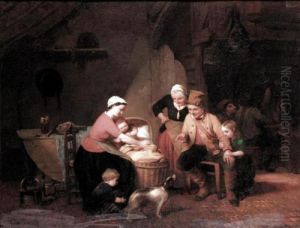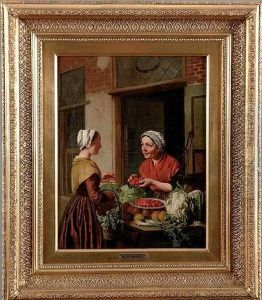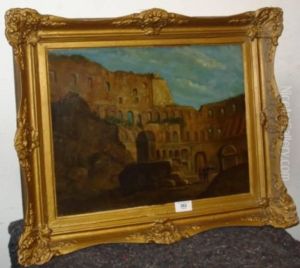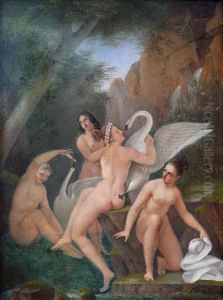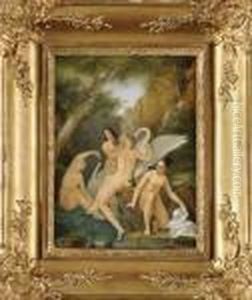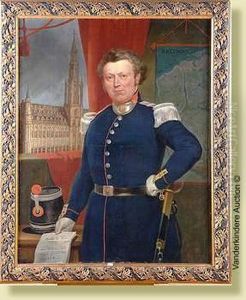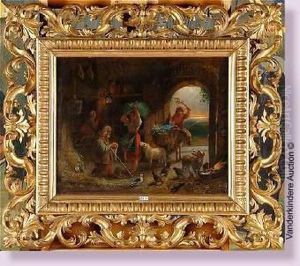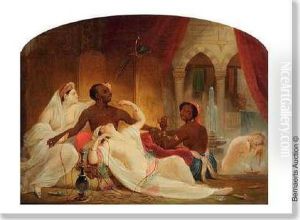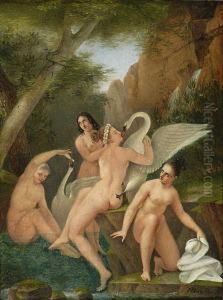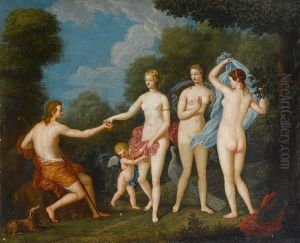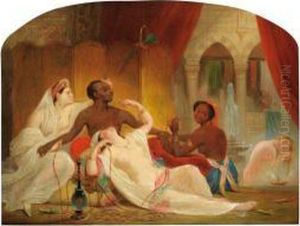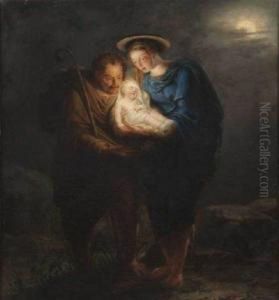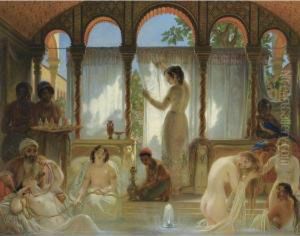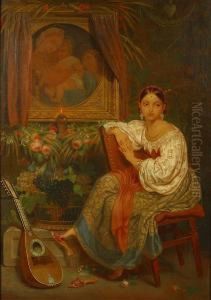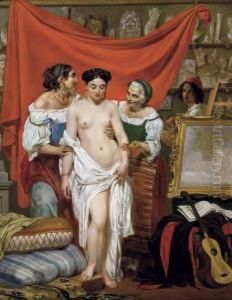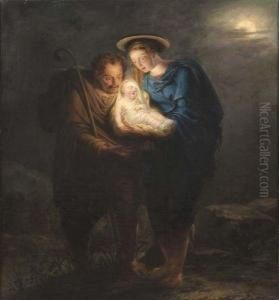Philippe Van Bree Paintings
Philippe Van Bree was a notable Belgian painter, born in Antwerp in 1786. His artistic journey began in his hometown, where he was deeply influenced by the rich artistic culture of the city, known for its significant contributions to the Flemish painting tradition. Van Bree's early exposure to art came through his family, particularly his brother Mattheus Ignatius Van Bree, who was also a distinguished artist and played a crucial role in Philippe's development as a painter.
Philippe Van Bree's artistic endeavors took him beyond the borders of Belgium, most notably to Paris and Rome. In Paris, he was exposed to the burgeoning Romantic movement, which would come to influence his work significantly. His time in Rome, however, marked a pivotal point in his career. Here, Van Bree was immersed in the study of classical art and Renaissance masterpieces, which deeply influenced his style and thematic choices. The Italian influence is evident in his preference for historical and mythological subjects, rendered with a romantic sensibility that was characteristic of the era.
Throughout his career, Van Bree enjoyed considerable success and recognition. He was particularly esteemed for his historical paintings, which were praised for their emotional depth and technical mastery. His works were exhibited widely, not only in Belgium but also in France and Italy, garnering accolades and awards. Moreover, Van Bree was a respected member of various artistic societies, including the prestigious Royal Academy of Fine Arts in Antwerp, where he also served as a professor, influencing the next generation of Belgian artists.
Van Bree's contribution to the arts was not limited to his paintings. He was also involved in the artistic direction of significant public works and served in advisory roles for art collections and exhibitions. His legacy is preserved in the collections of major museums in Belgium and abroad, where his works continue to be admired for their emotional intensity and technical precision.
Philippe Van Bree passed away in 1871, leaving behind a rich body of work that reflects both the classical influences of his Italian sojourn and the romantic spirit of his era. His paintings remain a testament to the vibrancy of Belgian art in the 19th century and continue to inspire and captivate art lovers and historians alike.
